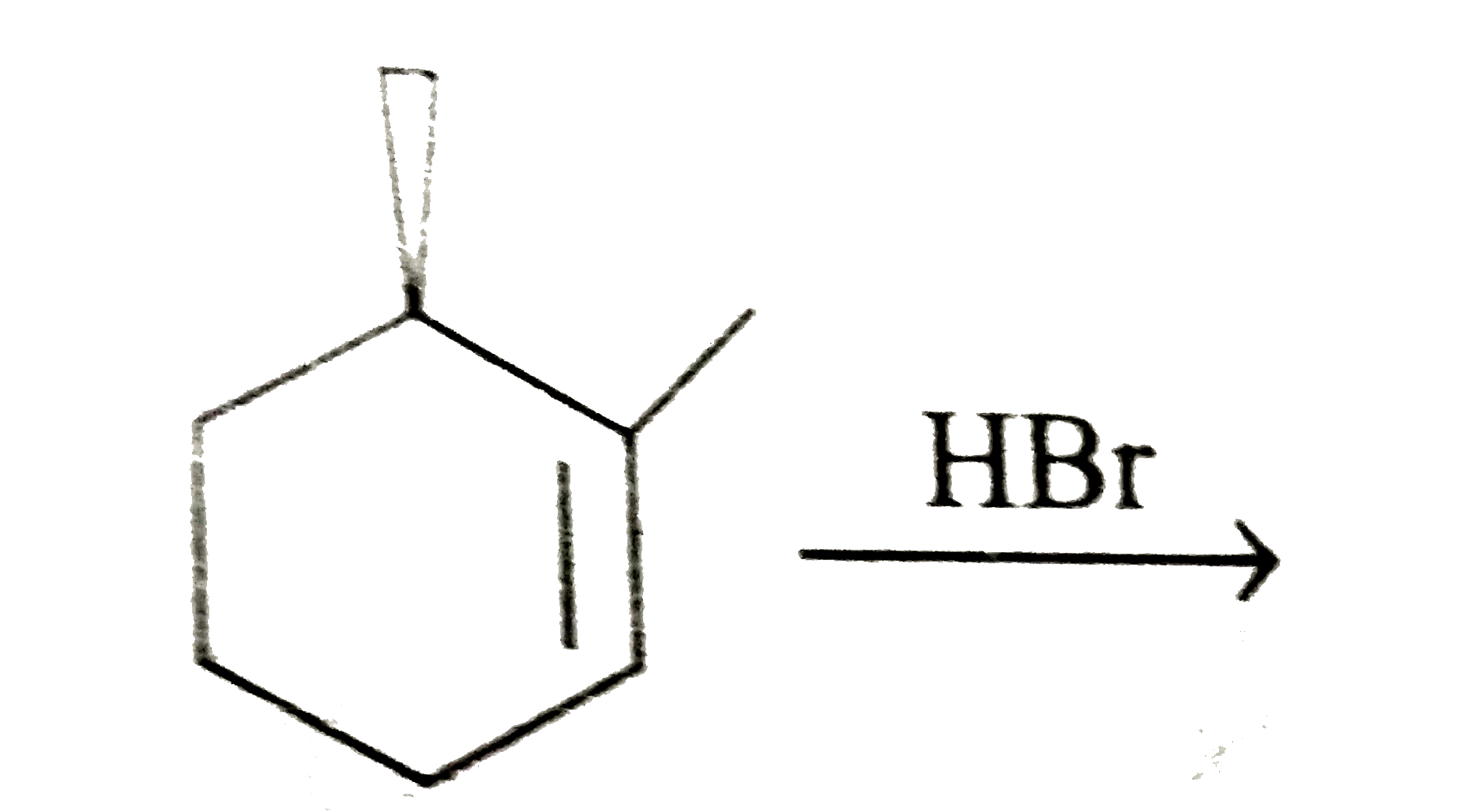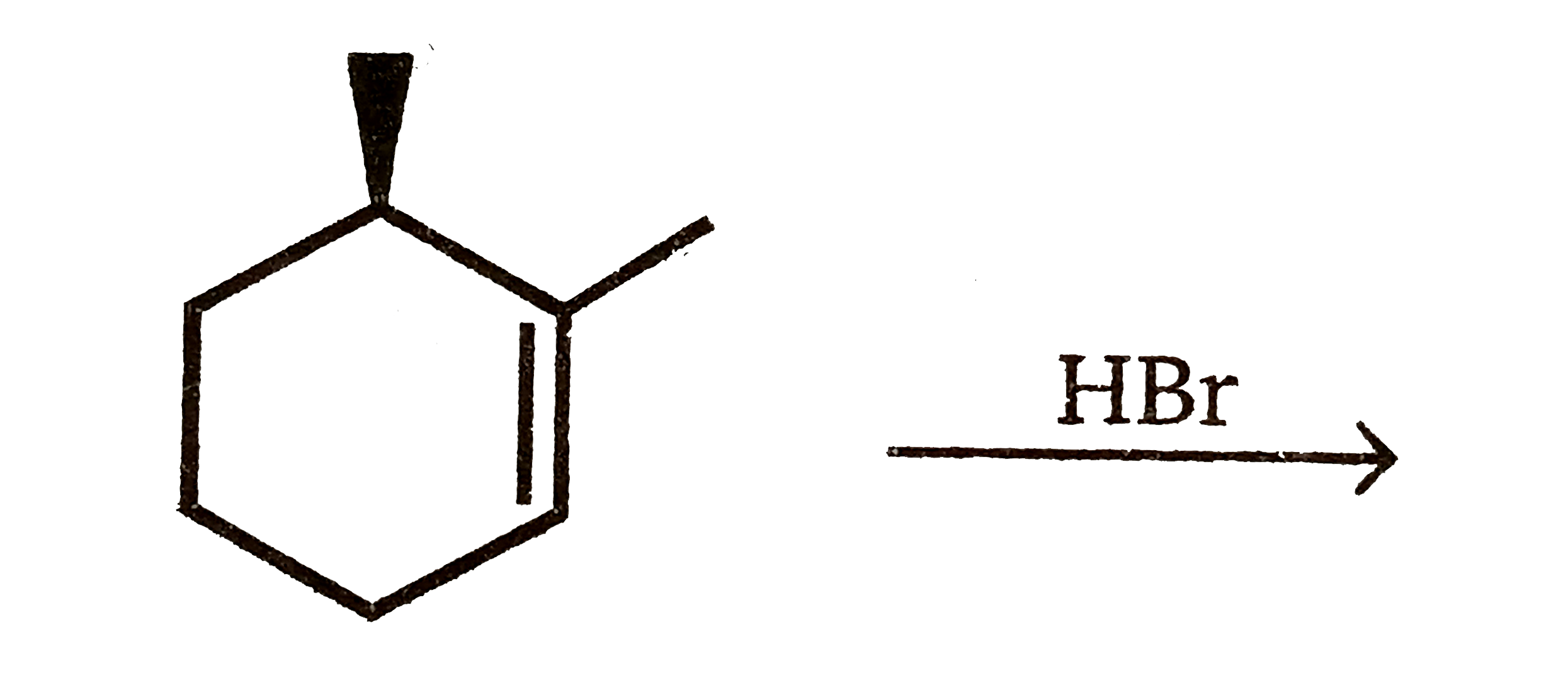Alkenes react rapidly with bromine in non-nucleophilic solvents to form vicinal dibromides.This reaction can be best described as
Electrophilic addition
Nucleophilic addition
Nucleophilic substitution
Electrophilic substitution
The correct Answer is:A
To solve the question regarding the reaction of alkenes with bromine in non-nucleophilic solvents to form vicinal dibromides, we can break down the process step by step.
1. Identify the Reactants and Products:
- The reactant is an alkene (C=C) and the reagent is bromine (Br2).
- The product formed is a vicinal dibromide, which has two bromine atoms attached to adjacent carbon atoms.
2. Understanding the Reaction Conditions:
- The reaction occurs in a non-nucleophilic solvent, such as carbon tetrachloride (CCl4) or chloroform (CHCl3). These solvents do not participate in the reaction as nucleophiles.
3. Mechanism of the Reaction:
- The alkene undergoes an electrophilic addition reaction with bromine.
- The double bond in the alkene acts as a nucleophile and attacks one of the bromine atoms, leading to the formation of a cyclic bromonium ion intermediate.
4. Formation of the Bromonium Ion:
- When the alkene attacks Br2, it forms a cyclic structure where one bromine atom is positively charged (Br+) and the other is negatively charged (Br-).
- This cyclic bromonium ion is a non-classical carbocation.
5. Nucleophilic Attack:
- The negatively charged bromine (Br-) then attacks the more substituted carbon of the bromonium ion from the opposite side (backside attack). This results in the opening of the bromonium ion and the formation of vicinal dibromide.
6. Final Product:
- The final product is a vicinal dibromide where two bromine atoms are added to adjacent carbon atoms of the original alkene.
7. Conclusion:
- The overall reaction can be classified as an electrophilic addition reaction, specifically the addition of bromine to an alkene.
Answer:
The reaction can be best described as an electrophilic addition reaction.
- The reactant is an alkene (C=C) and the reagent is bromine (Br2).
- The product formed is a vicinal dibromide, which has two bromine atoms attached to adjacent carbon atoms.
- The reaction occurs in a non-nucleophilic solvent, such as carbon tetrachloride (CCl4) or chloroform (CHCl3). These solvents do not participate in the reaction as nucleophiles.
- The alkene undergoes an electrophilic addition reaction with bromine.
- The double bond in the alkene acts as a nucleophile and attacks one of the bromine atoms, leading to the formation of a cyclic bromonium ion intermediate.
- When the alkene attacks Br2, it forms a cyclic structure where one bromine atom is positively charged (Br+) and the other is negatively charged (Br-).
- This cyclic bromonium ion is a non-classical carbocation.
- The negatively charged bromine (Br-) then attacks the more substituted carbon of the bromonium ion from the opposite side (backside attack). This results in the opening of the bromonium ion and the formation of vicinal dibromide.
- The final product is a vicinal dibromide where two bromine atoms are added to adjacent carbon atoms of the original alkene.
- The overall reaction can be classified as an electrophilic addition reaction, specifically the addition of bromine to an alkene.
The reaction can be best described as an electrophilic addition reaction.
Topper's Solved these Questions
Similar Questions
Hydrocarbon (A) reacts with bromine by substitution to form an alkyl bromide which by Wurtz reaction is converted to gaseous hydrocarbon containing less than four carbon atoms. A is
View SolutionHydrocarbon (A) reacts with bromine by substitution to form an alkyl bromide which by Wurtz reaction is converted to gaseous hydrocarbon containing less than four carbon atoms. A is
View Solution
Knowledge Check
Alkenes react rapidly with chlorine or bromine in non-nucleophilic solvents to form
Ageminal dihalidesBα,ω-dihalidesCvicinal dihalidesDa mixture of (1) and (3)The product of following reaction can be best describe as:
 Aa recemic mixtureBa single enantiomerCa pair of diastereomersDan achiral molecule
Aa recemic mixtureBa single enantiomerCa pair of diastereomersDan achiral moleculeThe product(s) of the following reaction can best be described as:
 Aa racemic mixtureBa single enantiomerCa pair of diasteriomersDan achiral molecule
Aa racemic mixtureBa single enantiomerCa pair of diasteriomersDan achiral molecule
Hydrocarbon (A) reacts with bromine by substitution to form an alkyl bromide which by Wurtz reaction is converted to gaseous hydrocarbon containing less than four carbon atoms. A is
View SolutionHydrocarbon(A) reacts with bromine by substitution to form an alkyl bromide which by Wurtz reaction is converted to gaseous hydrocarbon containing less than four carbon atoms (A) is
View SolutionHydrocarbon(A) reacts with bromine by substitution to form an alkyl bromide which by Wurtz reaction is converted to gaseous hydrocarbon containing less than four carbon atoms (A) is
View SolutionHydrocarbon(A) reacts with bromine by substitution to form an alkyl bromide which by Wurtz reaction is converted to gaseous hydrocarbon containing less than four carbon atoms (A) is
View SolutionHydrocarbon (A) reacts with bromine by substitution to form an alkyl bromide which by Wurtz reaction is converted to gaseous hydrocarbon containing less than four carbon atoms. (A) is
View Solution
